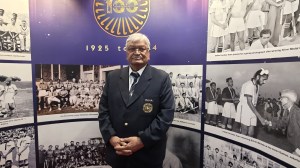Lahore lesson: Life can be such a pitch
When the opening days of an India-Pakistan series bring just two nailbiting moments and both revolve around run out dismissals, you know lif...

When the opening days of an India-Pakistan series bring just two nailbiting moments and both revolve around run out dismissals, you know life is such a pitch.
Put another way, when the third batsman in just the third day, all 15 overs of this badly lit third day, is poised to pluck a sub-100 ball century and each innings draws just muted flutters, you know the track holds more returns for them than is fair for a Test match.
Dark clouds and the smell of rain may have, in any case, drawn this match beyond the prospect of a definite conclusion, but a villain has been identified. And it is 22 yards long.
Pakistan coach Bob Woolmer made the obvious point on Sunday: ‘‘Good pitches lead to good matches. They must give both batsmen and bowlers a chance.’’ And this Lahore track, as his Indian counterpart Greg Chappell said a day earlier, reminded him of Faisalabad ’82, which Dennis Lillee termed a graveyard of bowlers.
Which is why when, a few days ago, Inzamam ul-Haq complained that this was not bouncy enough, a snigger went round: the Pakistan captain knew his top order would pull such mammoth scores that he may not get a chance to settle into a long spell at the ground that’s given him his highest innings of 329.
But what does a team do when sent out to field on such a track? Do its bowlers simply surrender to the inevitable and conserve their tricks for happier tracks? ‘‘No’’, said Woolmer. ‘‘You adopt certain methods, alter your line, bowl short ones.’’ And, he conceded, ‘‘you wait for mistakes from batsmen.’’
But Lahore’s ground has so buried its terrors that once play commenced late on Sunday, amidst cloudy skies and the moistness of an early morning half-hour of rain, Virender Sehwag decided he’d had enough of being the only specialist opener in the Indian XI.
In this team infatuated with middle-order batsmen, which creates the circumstances to squeeze its best batsman to take opening guard against the most feared bowler, he decided that he would not endanger his future. Specialist openers are liable to be expelled at short notice, so Sehwag made sure his technique had no pretensions to that endangered art. He drove and cut Akhtar and Rana Naved-ul-Hasan with a flamboyant chanciness that carried no danger.
An apocryphal tale is told of the ground here at the Gaddafi. It is said that the stadium at one point was taken over by weddings and non-cricketing celebrations till the groundsman collapsed of grief. The attendant attention thereafter returned the stadium to its cricketing mission.
But as the PCB’s head curator told the website cricinfo.com now, there may just be too much cricket for the venue to handle. ‘‘Too many matches have been played here in recent times’’, said Agha Zahid.
‘‘We had a Test and an ODI against England last month and, before that, Australia A also played a number of matches here. We have three main strips on which we play but when so many matches are held, the juice goes out of the pitch. It deadens a little and so preparation becomes that much harder.’’
It is, of course, also being argued that this barren track was part of a well-worked out design. Chappell said that he had actually expected this sort of a track. ‘‘They wanted to make sure it would be hard for us to bowl them out twice’’, he speculated. Pakistan’s fast bowlers, after all, rely less on the surface than India’s do to work up pace.
But that’s a finesse that can go beyond the skills of the best of curators. It’s best to let Shahid Afridi have the last say about Lahore: ‘‘Yeh theek thak dead wicket hai.’’
|
SCOREBOARD
|
||
|
PAKISTAN 1ST INNINGS |
||





- 01
- 02
- 03
- 04
- 05


























